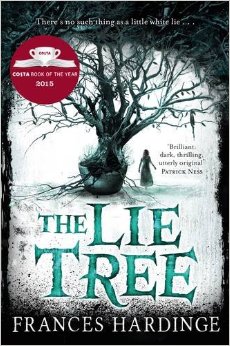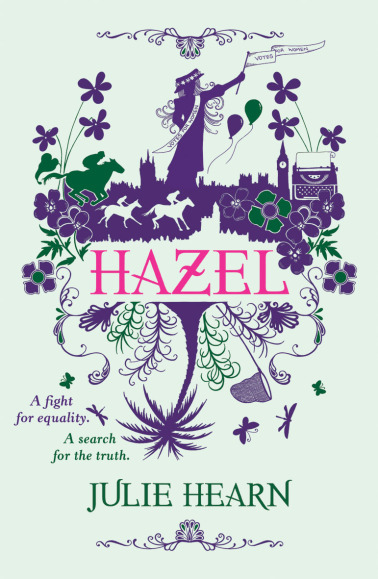I was recently asked to give a talk at a conference about Teen and Young Adult historical fiction, and time being short, we didn’t get onto one of the most pertinent discussions about Young Adult historical fiction, which is, what exactly is a young adult? And when do you cease to become a ‘teen’ and become a ‘young adult’? I have long-maintained that a person’s maturity cannot be measured in years. There are some children who are eminently grown-up, and some grown-ups who are stuck in childhood. Some adults are still exploring their role in relationships, and can indeed have been married and divorced before they have a chance to think deeply about their ‘coming of age’. Moreover, some aspects of a personality can be mature whilst others remain under-developed. So young adult fiction, and particularly historical fiction, has much to offer all readers, whatever their age.
Readers’ lives can be expanded to include unusual experiences or life-changing events through fiction. And these experiences will enable the reader to think through aspects of their life that might have been missing, or to enjoy playing a role that might never be open to them. Historical fiction for young adults is interesting because up until the 20th century, there was no such thing as a young adult or teenager. Adult roles, including procreation, were taken on for the most part as soon as you were physically able to perform them. As such it is a wonderful genre to explore situations which would be unthinkable in contemporary fiction.
Also, it is interesting that most media portrayals of teens and young adults are by actors who are actually much older than their years, but behaving in a much younger way, leading to a confusing message about what is/is not adult behaviour. However, fiction looks at life from the inside, enabling the situation and character to resonate with the reader whatever the actual age of the reader, and although the publishing world would like to divide us into neatly categorised boxes, fortunately, mostly we refuse to fit.
The two historical novels I’ve chosen to review today are aimed at teen or young adult readers, but are well-worth anybody’s time and money. Both hinge around the vexed question of; what is a woman, and how does a child become one? Not only that, but how does a woman fit inside a man’s world, or a world where women are belittled or disenfranchised? And of course by reflection, the novels also consider what it is to be a patriarch, or a man in that world.
 The Lie Tree by Frances Hardinge
The Lie Tree by Frances Hardinge
This is a dark tale of lies, deception, and what it takes to be a woman in a man’s world. It is a story touched with the fantastical, in which after her father’s mysterious death, fourteen year year old Faith inherits a ‘Lie Tree’, a strange plant that has the power to reveal the truth but needs someone to lie in order to thrive and reveal its secrets. Of course the truth is not always comfortable, and Faith soon finds she is both attracted and repelled by the tree.
Part fable, part detective novel, the combination is compelling. There are echoes here of Eve’s fall, and the tree of the Knowledge of Good and Evil, and this Biblical slant is used to good effect, to highlight the Victorian difficulty with evolution and man’s place in God’s world. There is much symbolism in the book, which adds to the depth of the narrative. Also impressive is the way the novel twists at the end to reveal that people can be subversive despite their perceived role in society.
As a novel it gave me plenty to think about. In fact I’d rather have a slightly uncomfortable read, which leaves me thinking, than a comfortable read with no substance. A good book should move you from where you are to a different place, even if only temporarily. If you like Victoriana, dark fairy tales, and something to challenge your way of thinking, this is highly recommended.
 Hazel by Julie Hearn
Hazel by Julie Hearn
From the moment Hazel Louise Mull-Dare witnesses Emily Davison the Sufragette being knocked down by a horse at the Epsom Derby in 1913, she starts to question a woman’s role in society. Her eyes are opened to the things she had taken for granted, and her comfortable life changes as she gets more involved with the Sufragette cause. Her new found independence, and mixing with ‘the wrong sort of people’ soon leads her into trouble however, and she is sent half-way across the world to her grandparents who live in the Carribean. There she’s exposed to the contrasts between the white lifestyle and the slavery on the sugar plantation.
Although this sounds a little too unlikely in this review, Hearn handles the plot transition easily, and the story easily carries the reader along. A delight of this novel is the contrast in dialogue between all the different classes, and the way Hearn conjures a country in a few brushstrokes.
Hazel’s own development mirrors the larger social and political concerns of the day, linking the personal to a wider context. Through her experiences, Hazel’s eyes are gradually opened to the injustices of the world. From tea at Fortnum and Mason, to witnessing the tin shack in which other people are supposed to make a life. At the end of the book we see a woman who has matured beyound the maturity of her parents, whose eyes are still deliberately and firmly shut, and this is moving to see.
